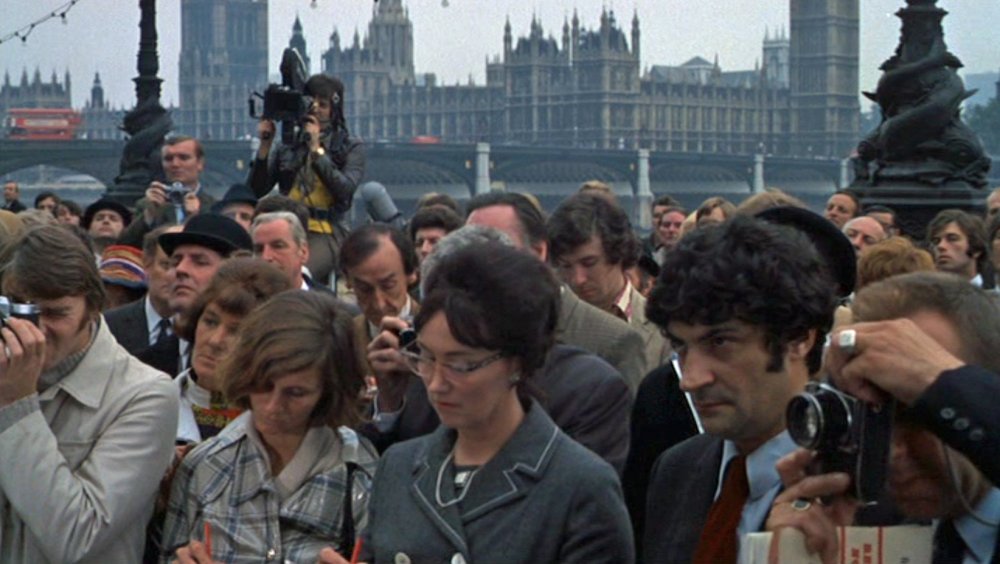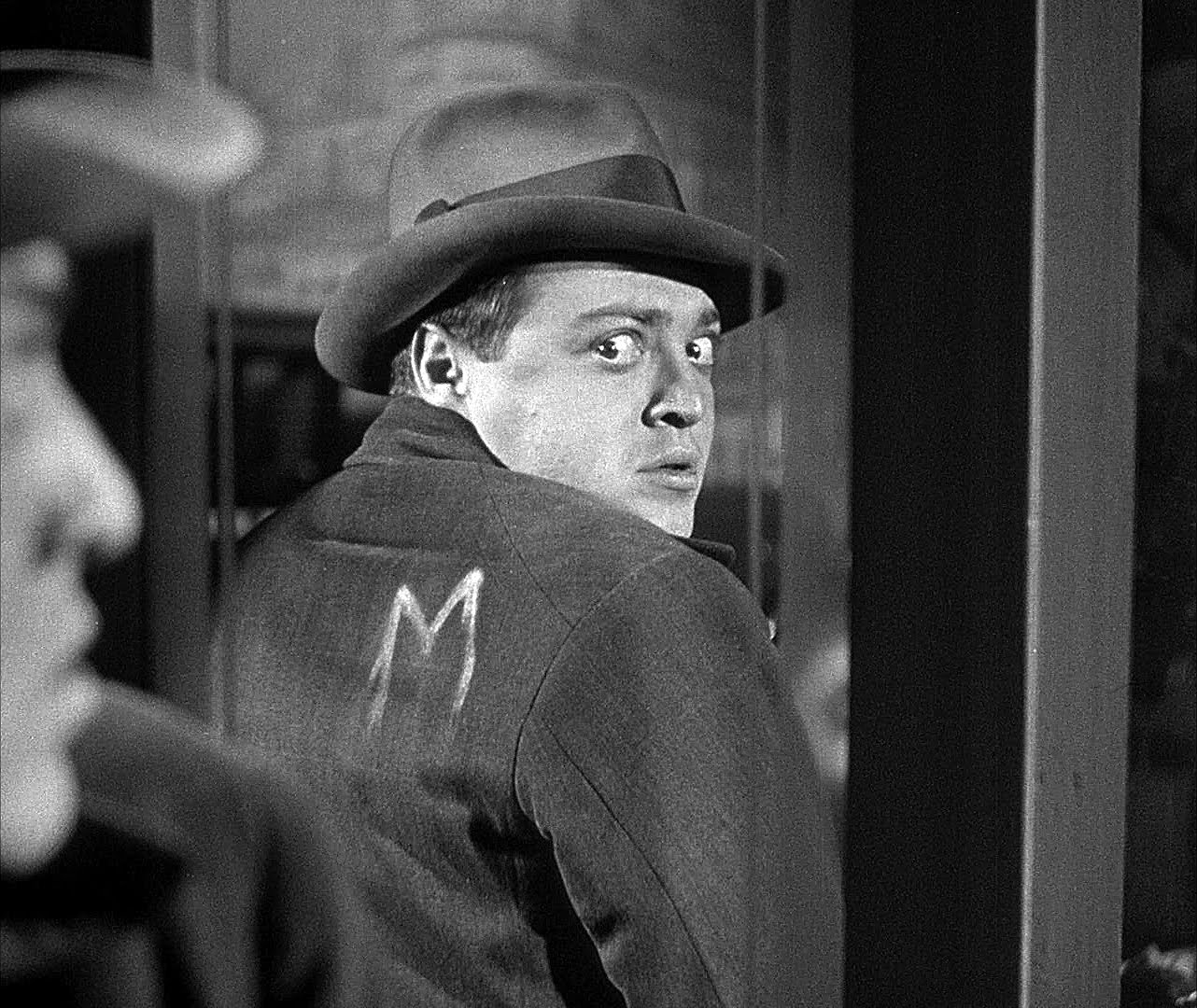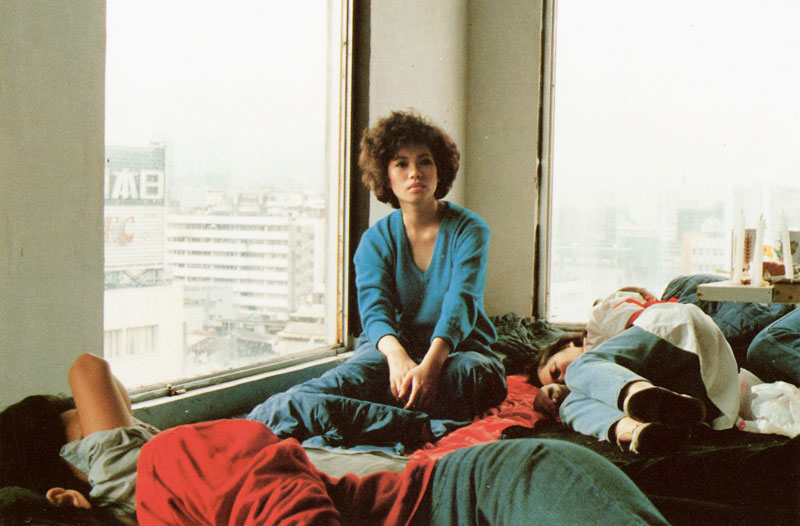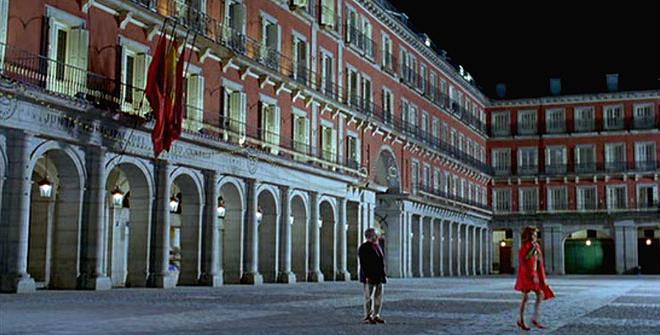6. Alfred Hitchcock – London

When one first considers Alfred Hitchcock, the USA most likely comes to mind – visions of lonely Californian motels or bustling skyscraper-filled metropolises seen in the likes of Psycho (1960) and Vertigo (1958) – but it’s important to remember the connection between the master of suspense and his hometown, London. Indeed, before moving to the USA to build on his career, much of his work took place in the city. In a 10-year period from 1926, 6 of his films featured London prominently.
Working primarily in the studios around the city, Hitchcock tried to film on location when the chance presented itself, thus beginning one of his traditions of including famous landmarks in his films: consider the climax to Blackmail (1929), which takes place atop the British Museum’s dome, and The Lodger (1927), which contained location shots of Westminster, the Embankment and Charing Cross.
He was also inherently aware of London’s history and showed this in his work. The end shootout in The Man Who Knew Too Much (1934) was influenced by a notorious episode called the ‘Sydney Street Siege’ that occurred in the East End where Hitchcock grew up. It was notable that this part wasn’t included in his American remake of the film in 1956.
He returned to the city for his penultimate film Frenzy (1972), his final homage to the city that had raised him and shaped him. Perhaps one director doesn’t dominate a whole country’s cinematic output like Alfred Hitchcock, but when thinking of classics like The 39 Steps (1935), it’s impossible not to picture the foggy landscape of London.
7. Fritz Lang – Berlin

Berlin could be called the originator of the ‘city film.’ During the 1920’s in Europe, Berlin was the center of cosmopolitanism and modernism and so it was only natural that the Berlin as urban space served as a template for numerous directors’ of the time. These early cinematic depictions emerged as a result of an increased curiosity with metropolitan development and layout.
The most emblematic work of the time is Fritz Lang’s Metropolis (1927), a science fiction classic which explored the connection between the city and industrialization. Not specifically Berlin but rather an imagined utopia vision of the city, Lang utilized the architecture of his vision to signify the social ailments of the expanding industrialized city; in the vertical, futuristic space, the spacious, elevated upper world was the world of the factory owner, with the workers residing in the lower area below the surface, creating a deeply dystopian sense of place in the modern world.
Numerous shots displayed the dazzling modernist architecture of the metropolis in direct contrast with the obvious oppression of its citizens below the sharp, gleaming skyscrapers. This brutal Berlin of an imagined future through Lang’s eyes portrayed a culmination of advancing technology and modernity and the people of the city as mere machinations of the greater urban space.
Taking Berlin as his explicit territory in 1931, Lang made the film noir masterpiece M, a further exploration of the urban environment. Revolving around a serial killer hunted by the police, the opening scene highlights the anxiety of Berlin and the city: a group of children, in the courtyard of a Berlin tenement, are playing a game about a murderer of children. The camera then moves from here to a woman carrying laundry up an empty staircase into the apartment of Elsie Beckmann’s mother who is worried about her daughter’s failure to arrive home from school yet.
Under all the decadence of the fashionable Berlin and shining lights of the modern metropolis, Lang shows, are people trying to conduct their lives amidst consistent feelings of dread and alienation. Through these films, Berlin became the representational metropolis, the genres of science-fiction and film noir feeling perfect to encapsulate the experience of the time.
8. Wong Kar-Wai – Hong Kong

A New Wave movement out of Asia arrived in Hong Kong. Coming of age in the new era of television and popular culture with no memories of war, filmmakers like Wong Kar-Wai captured the alienation of youth and the uncertainty regarding their city’s future and identity. Wong’s oeuvre displayed a coolness and fashionability not seen since Godard and the French New Wave; his work of fragmented, mesmeric brilliance caused eruptions in the cinematic landscape. He was an auteur perfectly in touch with his city and his distinct filmmaking style was encased in Hong Kong as a place.
The dizzying speed of action and rapidity of the dialogue in Chungking Express (1994) and Fallen Angels (1995) reflected the non-stop lifestyle in the city. The episodic narratives of these films also highlighted the essential vulnerability and uncertainty of living in a place like Hong Kong, a claustrophobic, teeming metropolis where unexpected encounters and unforeseen experiences awaited one around every street corner (or in a cramped apartment complex, as evident in the beautiful In the Mood For Love (2000)).
Indeed, Wong’s penchant for shooting without a script was made for a place such as Hong Kong, allowing a looser structure with room for adaptation and improvisation. Looking down from Victoria Peak to the lights below, the quintessential Hong Kong view, it’s hard not to imagine the myriad of stories, interconnected or otherwise, existing in such a tight gathering of people, and Wong Kar-Wai successfully brings these to cinematic life.
9. Edward Yang – Taipei

In another area of Asia, Edward Yang was part of an emerging network of directors looking to refresh their country’s cinematic output, in what would come to be known as the New Taiwanese Cinema. Moving away from the usual martial arts action films and melodramas, this group sought to realistically portray what it was like to be a present-day citizen of Taiwan, a country experiencing fast urbanization and disputes with the political powers. These filmmakers wanted to depict life as honestly as they could.
In his concise filmography, Yang set his stories mostly in Taipei, the capital and largest urban area of Taiwan and what emerged was a consistent and insightful exploration of a burgeoning global and modern city.
In perhaps his most famous film, Taipei Story (1985), Yang chronicled the growing estrangement between a young couple; Lung, a struggling former baseball player, and Chin, an office worker with higher aspirations. Both are trying to cope with living in modern Taipei, in differing ways. Lung holds onto the past rigorously, wishing he had his baseball career back and frustrated with his menial job, in danger of being left behind by Chin, herself trying to survive in an increasing corporate world.
Yang fills their story with mournful shots of sterile high rises, as if to say that this could be anywhere; for Taipei, see Shanghai, or any number of expanding Asian metropolises. The logos of Japanese multinationals such as Fuji and NEC hint at the influence of giant corporations on the lives of ordinary Taiwanese. Lost amidst this new built environment, the couple’s love diminishes. The alienation felt under the blinding neon lights is evident. By using the personal story of Lung and Chin, Yang shows the struggle for survival brought on by the economic changes sweeping the city and country.
He would attempt a more ambitious encapsulation of Taipei in 2000 with the masterpiece Yi Yi (2000), which looked at three generations of one middle-class Taiwanese family living in the city. In this he further captured the struggle to maintain your human nature in a rapidly-evolving society. Yang’s greatest achievement was how general he made this all feel: while indeed exploring the Taiwanese identity in his films, Taipei stands as a truly global city. The cinematic images of identikit skyscraper-filled skylines emphasize that this could be anywhere in the world, as industrialization overcomes East and West.
10. Pedro Almodovar – Madrid

Pedro Almodovar moved to Madrid in the late 1960s as a budding young filmmaker and the city has been the setting and inspiration for his work ever since. A director fond of recurring themes (see his penchant for beautiful leading actresses like Penelope Cruz), Madrid formed the backdrop of most of his films.
In comparison to other directors and their cities, Almodovar’s connection is a more insidious and natural one. It’s not a showy love affair in the vein of Allen and Manhattan; rather, through quantity, his depictions of the lives of Madrilenas has led to the city being called his in the cinematic landscape.
While his films featured famed sights of the city—dancing in Plaza Mayor in The Flower Of My Secret (1995), or the Segovia Viaduct in Matador (1986), for example—there was never the sense that Madrid was overshadowing its citizens; it was their stories and lives that were the focus, with their city just an essential part of the recurring scenery.
Interesting parallels can also be drawn between Almodovar and the city itself. Starting out as provincial, he a boy from a nondescript village on the outskirts of the city and Madrid still recovering post-dictatorship, to being modern and internationally renowned.
Author Bio: Conor Lochrie is a Glaswegian currently travelling and working in New Zealand after 4 long and arduous years at university which he survived with a degree in Central and Eastern European Studies. Unsurprisingly, he now works in a warehouse but would much rather be watching and writing about cinema.